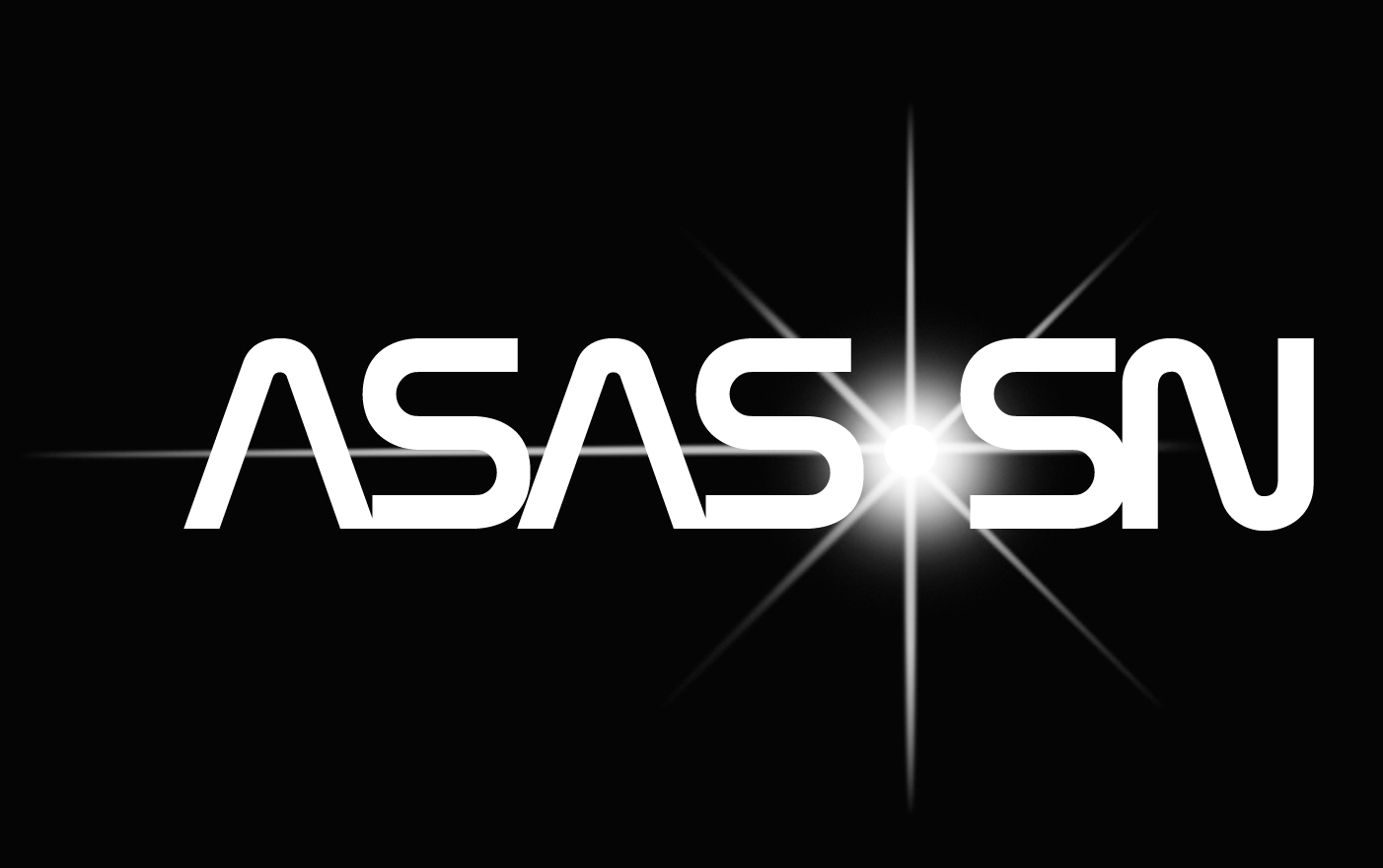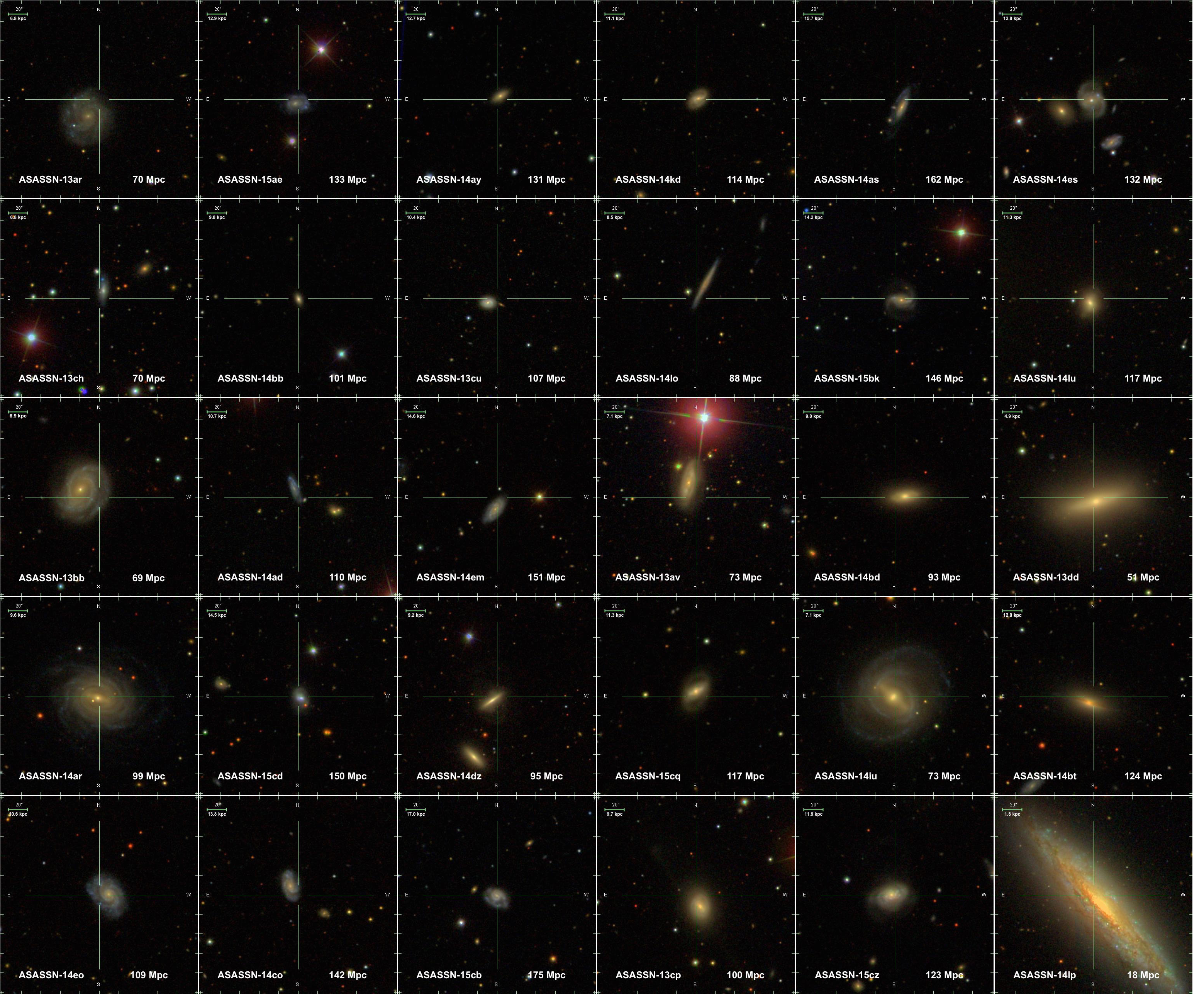
Assassin Picture of the Week
 | APOW Assassin Picture of the Week |

|
|
One of the main sceintific goals of ASAS-SN is to compile an unbiased sample of bright, local supernovae. We have been very succesful in that goal, including finding many supernovae in dwarf galaxies, possibly including even some ``hostless'' events. The diversity of supernova hosts in nicely illustrated in the figure above, where for a sample of 30 Type Ia explosions discovered by ASAS-SN we show SDSS image for the host galaxy, sorted from least luminous in the top left to most luminous (using 2MASS) in the bottom right. Distances to the hosts and the SN names are given in each sub-panel. The images are centered on the SN position, and it is easy to immediately see that our discoveries span a wide range of separations from the host nuclei, as well as host luminosities, colors, and morphologies. Why do we care? Our group has published a number of papers exploring how properties of different kinds of supernovae and also gamma-ray burst depend on their hosts, and obtaining unbiased samples of cosmic explosions is crucial in these studies. |
Back to ASAS-SN page.
See previous APOWs:
Bright Supernova Discoveries Statistics (Again)
ASASSN-14lp: the Brightest Supernova Currently on the Sky
ASASSN-14li: Possible Tidal Disruption Event in Progress
ASASSN-13co: Type-Defying Luminous Type II Supernova
Bright Supernova Discoveries Statistics
Bright Supernovae: ASAS-SN Contribution
First Light on the Small Magellanic Cloud from Chile
Congratulations to Tom and Jacob!
ASASSN-13dn: Spectra from a New Instrument
ASASSN-14ae, A Very Luminous Transient
Our Latest Paper, in Video Form
Host Galaxies of ASAS-SN Supernovae
Back in Real-Time Discovery Business!
Active (Some Less, Some More) Galactic Nuclei with ASAS-SN
Swift
Ultraviolet and Optical Follow-Up of ASASSN-13dl, Our Latest
Supernova
Dramatic AGN Outburst in NGC 2617
Two ASAS-SN Views of Orion Nebula
AAVSO Observations of Cataclysmic Variable ASASSN-13ck
Two ASAS-SN Supernovae in One Day!
Extreme M-dwarf Flare Observed by ASAS-SN;
Multiband photometric follow-up of ASASSN-13aw (SN 2013dr);
How ASAS-SN Discovers Supernovae: Case of Supernova ASASSN-13bb;
NGC 2617: Dramatic Seyfert Type Change;
ASASSN-13/SN 2013da: Our First Supernova Three Weeks Later;
This homepage is maintained by Tom Holoien and Kris Stanek.
Updated Wed Mar 25 14:32:55 EDT 2015